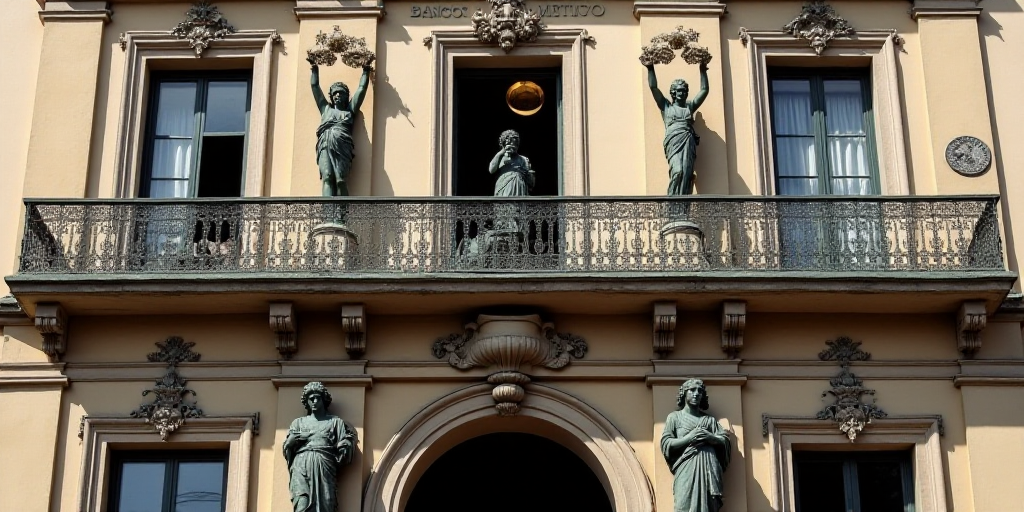Introduction
The global markets view the Banco de México as an independent, technically sound institution and a benchmark for investment decisions. This view is shared by strategists and economists from various financial institutions, including Banco Base, Bank of America, Barclays, BBVA, BNP Paribas, Monex, Rankia, Skandia, Ve por Más, and the investment bank XP.
Banco de México’s Autonomy and Credibility
According to Pamela Díaz Loubet, economist for Mexico at BNP Paribas, despite the economic and political challenges Mexico has faced in recent years, it has managed to maintain a line of independence and discipline in monetary policy, distinguishing itself from other regional countries.
Martín Castellano, Chief Economist for Latin America at the International Institute of Finance (IIF), emphasized that a central bank’s autonomy and the credibility of its inflation targeting scheme are highly valued assets that contribute to financial stability and price stability.
Janneth Quiroz, Director of Economic, Currency, and Securities Analysis at Monex, added that autonomy aims to eliminate incentives for altering interest rates based on the interests of governing powers.
Carlos Capistrán, Chief Economist for Latin America and Canada at Bank of America, noted that Mexico’s relatively constant debt-to-GDP ratio reduces the risk of losing central bank autonomy due to government pressure, unlike in the United States.
Autonomy Fostering Confidence
Jaime Álvarez, Vice President of Investments at Skandia, highlighted that the Banco de México’s autonomy was recently showcased when it published economic forecasts not aligned with government institutions.
Carlos Serrano, Chief Economist at BBVA Mexico, explained that investor confidence is reflected in well-anchored inflation expectations, as seen in the behavior of inflation-indexed bonds and the relative stability of the peso, given the perception that monetary policy will safeguard currency purchasing power.
Analysts agreed that the Banco de México’s statistics have become a reference point for strategists and investors.
Marco Oviedo, Latin America Strategist at XP from Brazil, praised the sophistication of the bank’s research documents and its advancement in transparency by making inflation forecasts public when taking monetary decisions.
Humberto Calzada, Chief Economist for Latin America at Rankia, emphasized the bank’s highly specialized and experienced personnel in managing economic shocks.
Díaz Loubet, Capistrán from Bank of America, and Casillas from Barclays concurred that the Banco de México is regarded as one of the best central bank institutions globally.
Single Constitutional Objective and Other Concerns
Opinions differ regarding the Banco de México’s adherence to its single constitutional objective of preserving purchasing power.
Gabriela Siller and Marco Oviedo from Banco Base pointed out that some members of the Governing Board have shown excessive concern for stimulating the economy rather than focusing on financial stability.
Carlos Serrano, however, noted that the bank has been considered more conservative than necessary in recent times.
The consulted strategists dismissed the possibility of the current global context of trade fragmentation and increased debt putting pressure on the Banco de México.
Castellano from IIF stated that external shocks like tariffs or migration policies and domestic factors such as government elections or fiscal policy changes are typical challenges for monetary authorities and should not threaten the Banco de México.
Key Questions and Answers
- What makes the Banco de México significant? It is viewed as an independent, technically sound institution with a strong reputation among global investors.
- Why is the Banco de México’s autonomy crucial? Autonomy and credibility in inflation targeting are highly valued assets that contribute to financial stability and price stability.
- How has the Banco de México demonstrated its independence? By publishing economic forecasts not aligned with government institutions and maintaining a line of discipline in monetary policy.
- What factors contribute to investor confidence in the Banco de México? Well-anchored inflation expectations, relative stability of the peso, and sophisticated research documents.
- Are there concerns about the Banco de México’s adherence to its constitutional objective? Yes, opinions differ on whether the bank prioritizes economic stimulus over financial stability.
- How do global challenges impact the Banco de México? Strategists believe that typical challenges like tariffs, elections, and fiscal policy changes should not threaten the bank.






